Northern Development Initiative Trust’s board of directors has approved a $250,000 grant to support the development of the Northwest Regional Airport apron expansion project. This project includes expanding the existing apron to allow for a third aircraft parking area for the airport’s commercial operations. The addition of a third aircraft parking area will allow the airport to service three commercial aircrafts at one time, also resulting in a reduction in the wait time for passengers in the terminal building.
The proposed third aircraft stand will be specific to service of commercial flights that directly generate new revenue for the airport while enhancing customer service. The expansion comes at a time when Terrace, Kitimat and the Skeena and the Nass Valley regions are experiencing unprecedented industrial growth projected to continue for the next decade. A reliable and effective airport, capable of handling large numbers of workers and cargo, will be an integral part of servicing regional demands for the next decade.
The Northwest Regional Airport Terrace-Kitimat records the highest levels of passenger traffic in the northwest, and the expansion project will add services for existing passengers, while assisting in the establishment of a broader, future customer base. Indirect revenue to local businesses such as aircraft fuel providers, car rental companies, hotels and airlines are also expected to increase as a result of the project completion.
The grant is being provided through the Trust’s Economic Diversification Infrastructure program, which provides up to $250,000 in funding to municipalities, regional districts, First Nations and non-profit organizations in Northern Development’s service area for projects that significantly strengthen the local economy via a major capital investment. Previously, Northern Development has supported 18 airport improvement projects with $14 million in funding approved toward $113 million in airport expansions in communities throughout the region including: Bella Coola, Vanderhoof, Burns Lake, Fort St. John, the Northern Rockies, Masset and the Xeni Gwet’in Community Airport.
Construction on the Northwest Regional Airport Apron Expansion is expected to begin later this spring.
Quotes:
“Investing in accessibility to our region through projects such as the Northwest Regional Airport Apron Expansion, act as a catalyst for economic growth in northern B.C. – and that’s what makes this a meaningful project,” said Evan Saugstad, Chair, Northern Development Initiative Trust. “The Trust is proud to support this exciting project through our Economic Diversification Infrastructure program.”
“With the advent of the proposed LNG facilities in B.C.’s Pacific Northwest, Northwest Regional Airport Terrace-Kitimat has been experiencing unprecedented growth. The $250,000 in funding from Northern Development Initiative Trust will facilitate the expansion of the apron, including a third aircraft hard stand. This will supplement the proposed air terminal building expansion, which includes a new passenger hold room incorporating three separate passenger gates,” said Dave Kumpolt, Manager of Airport Development, Northwest Regional Airport Terrace-Kitimat.
Quick Facts:
• Northern Development has previously supported 18 airport improvement projects with $14 million in funding approved toward $113 million in airport expansions in communities throughout the region
• Airport passenger traffic at Northwest Regional Airport grew approximately 38% between 2012 and 2013
• The Northwest Regional Airport Terrace-Kitimat plans to contribute $629,485 to the apron expansion from their own capital reserve, which would fund 72% of the total project costs
• The project has projected to generate more than $1,060,755 in incremental revenue generation for the airport in the next five years
Contact :
Joel McKay
Director, Communications
Northern Development Initiative Trust
250-561-2525
Carman Hendry
Manager
Northwest Regional Airport Terrace-Kitimat
250-635-2659





